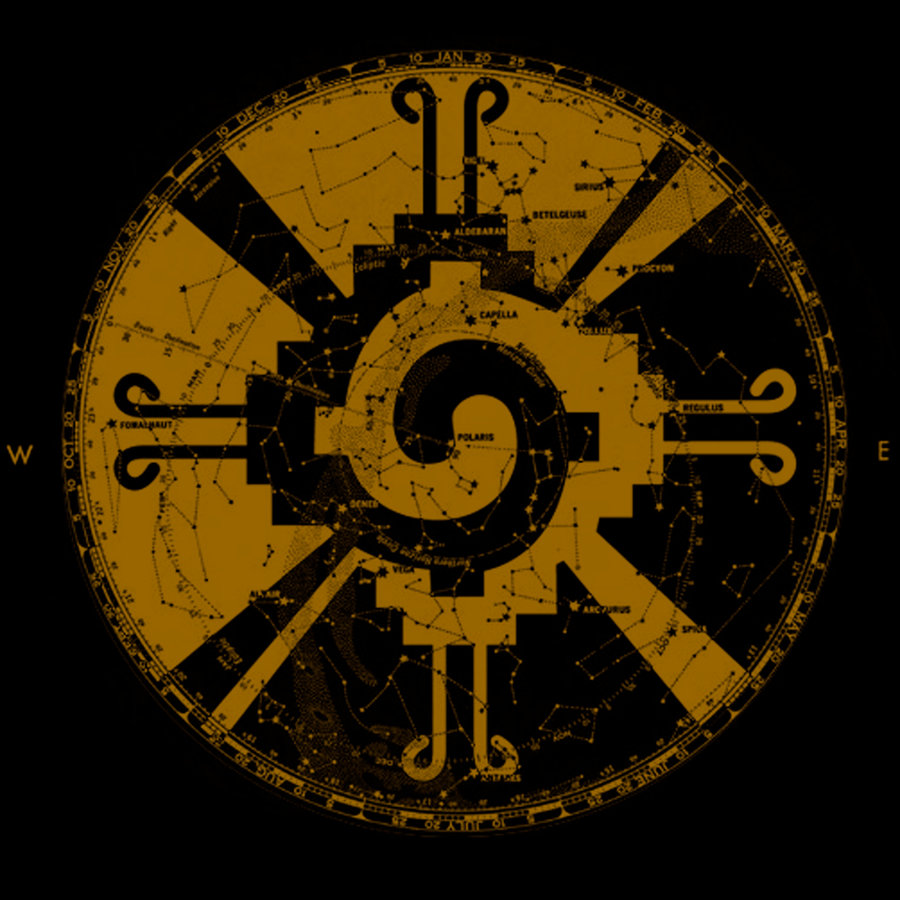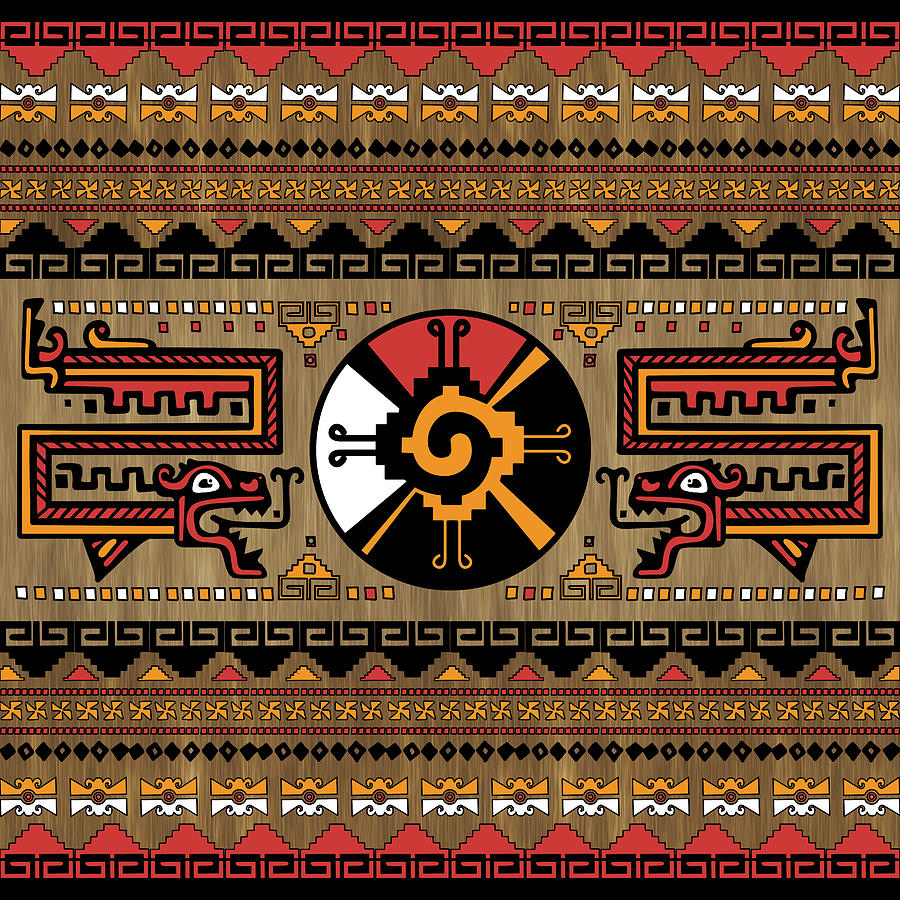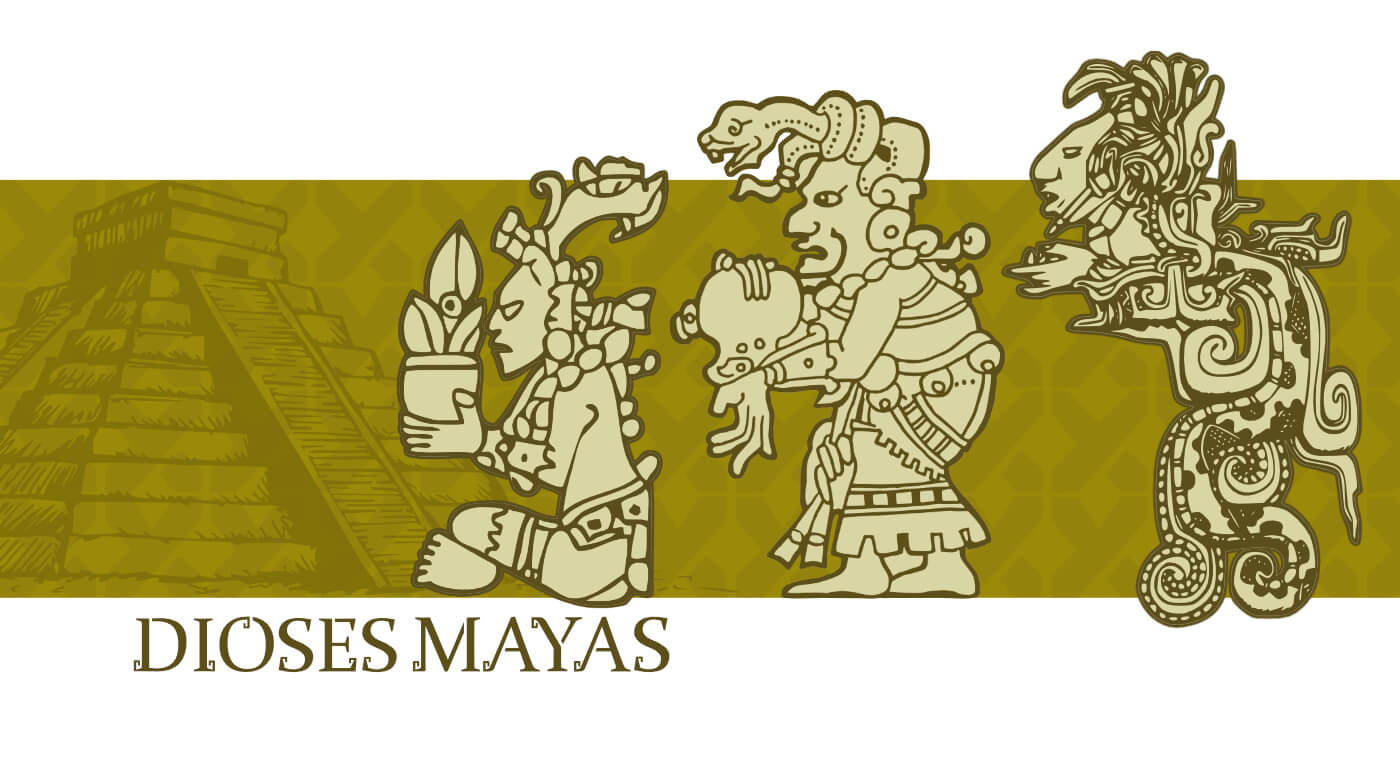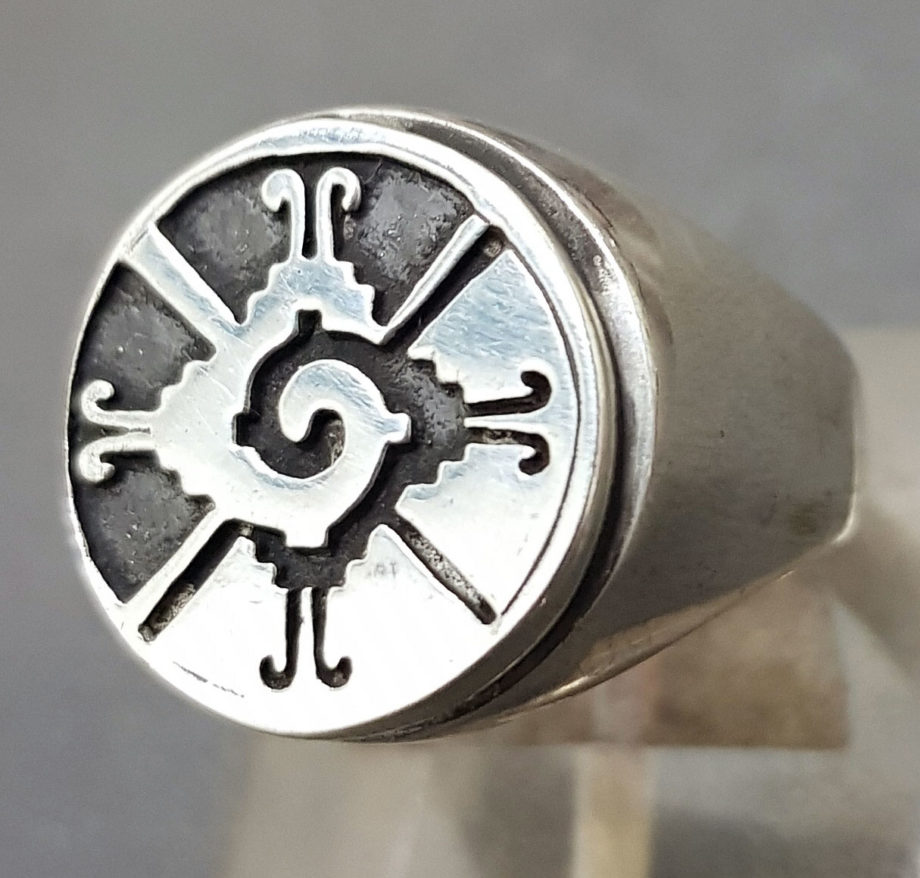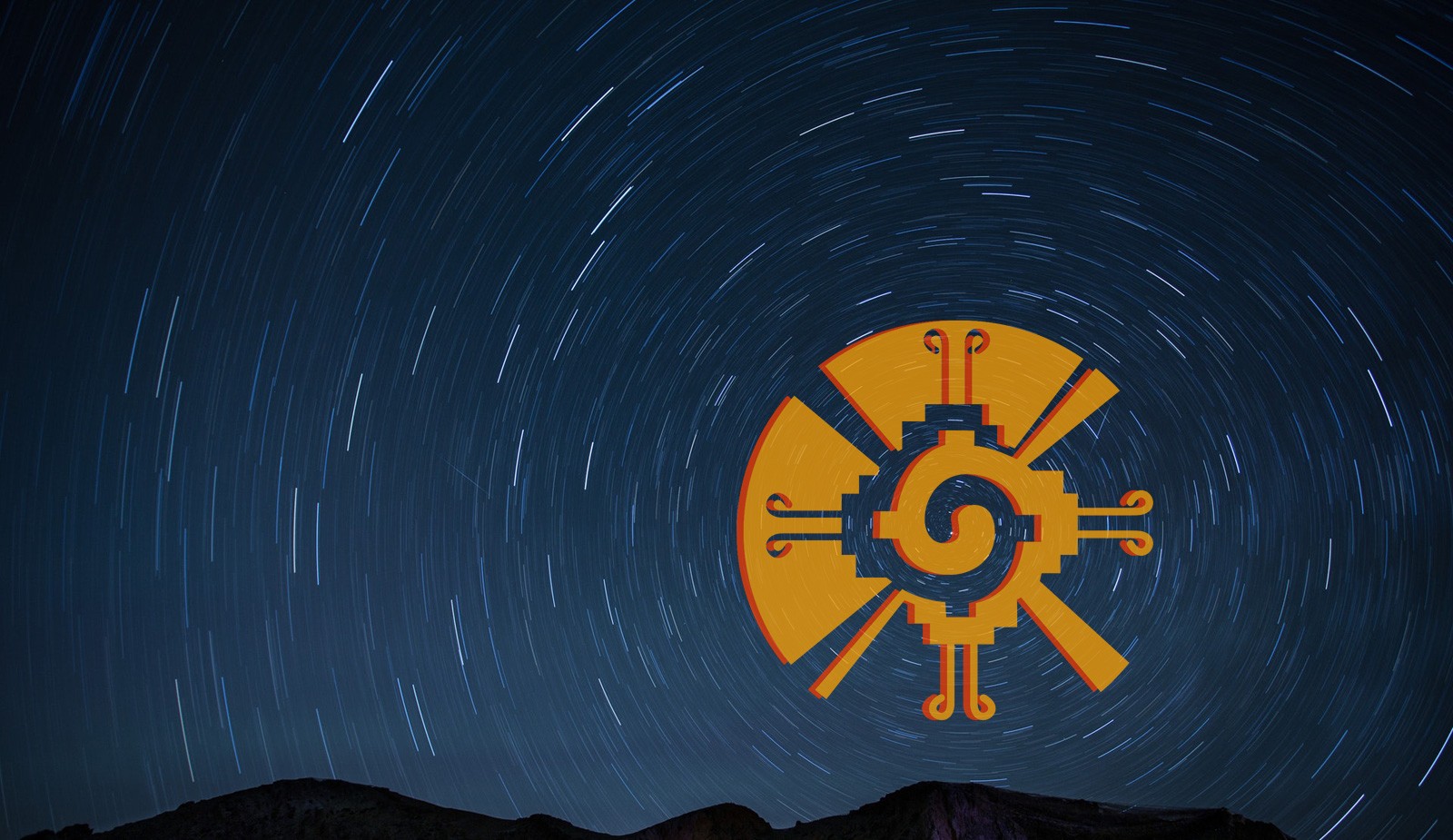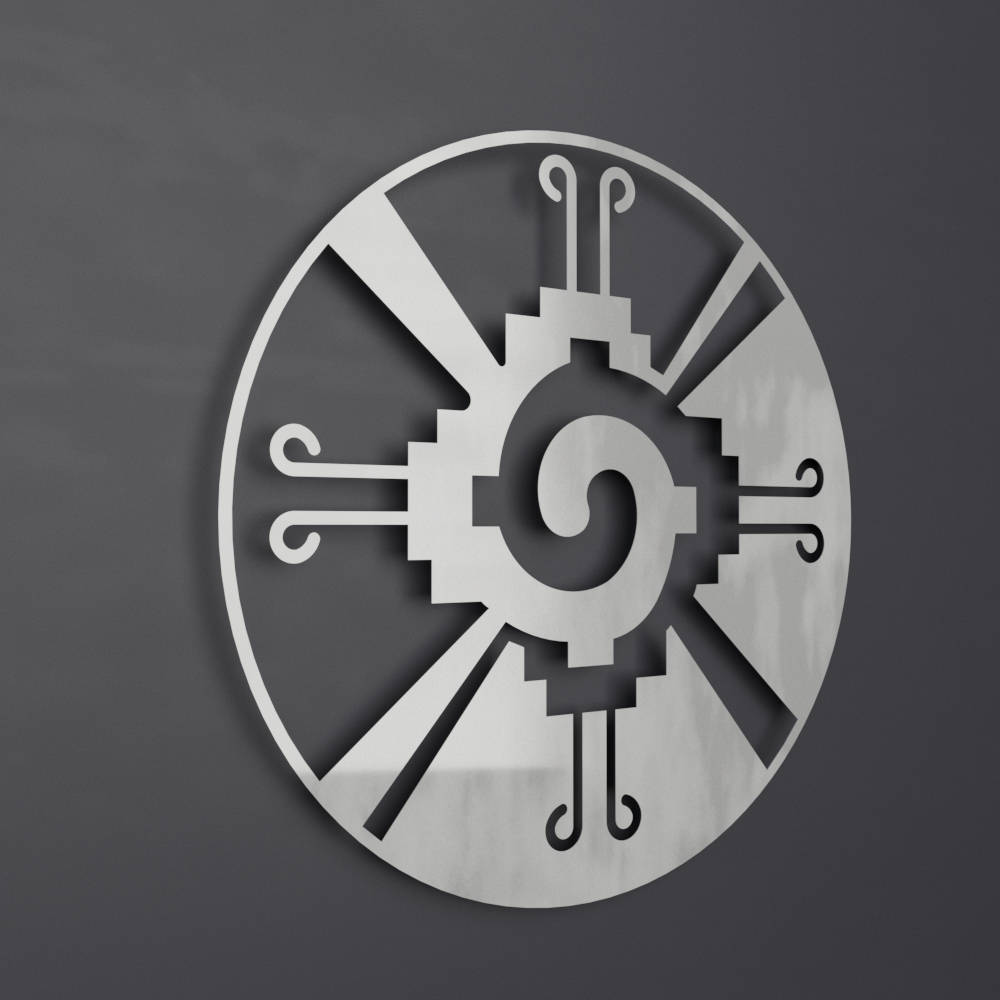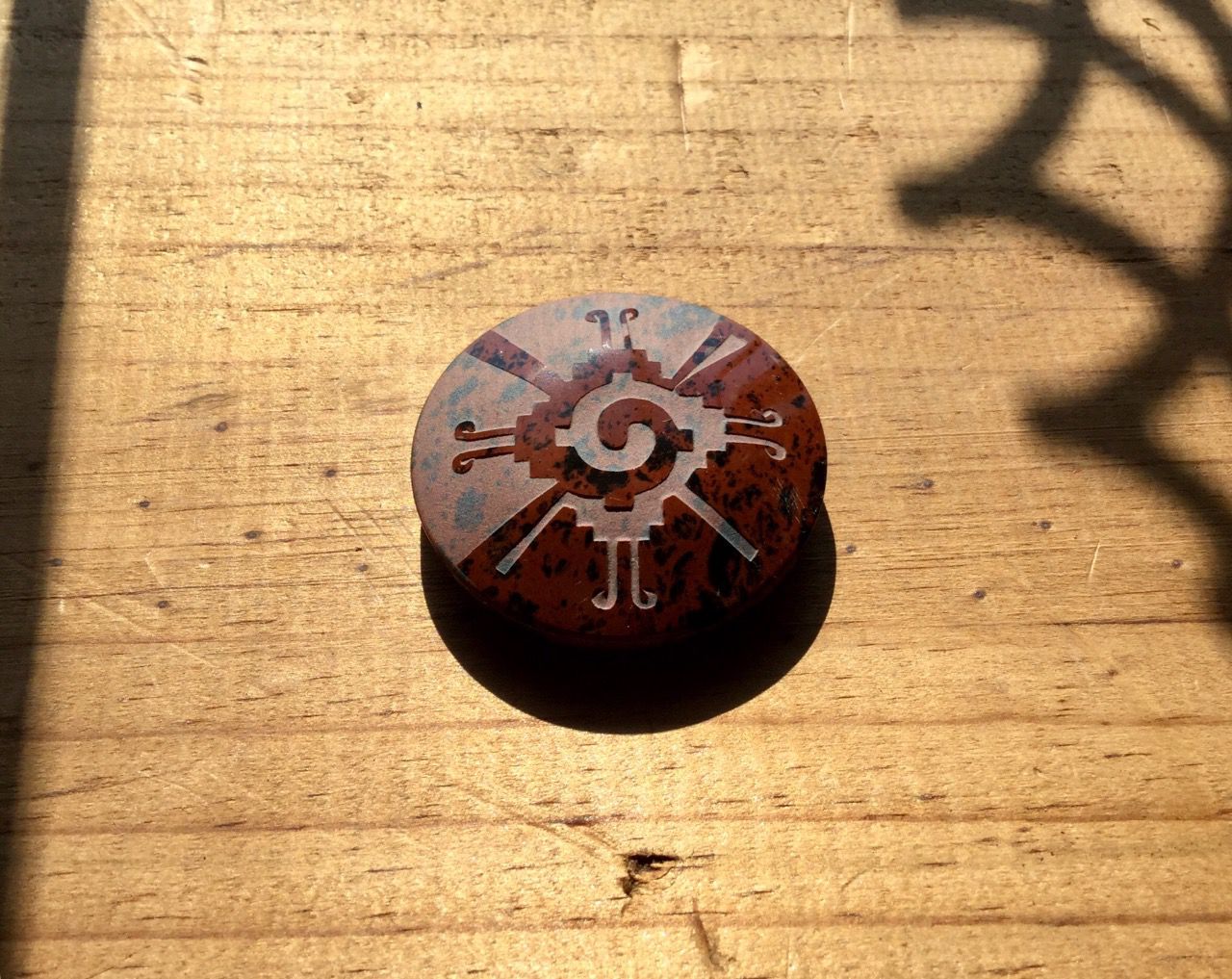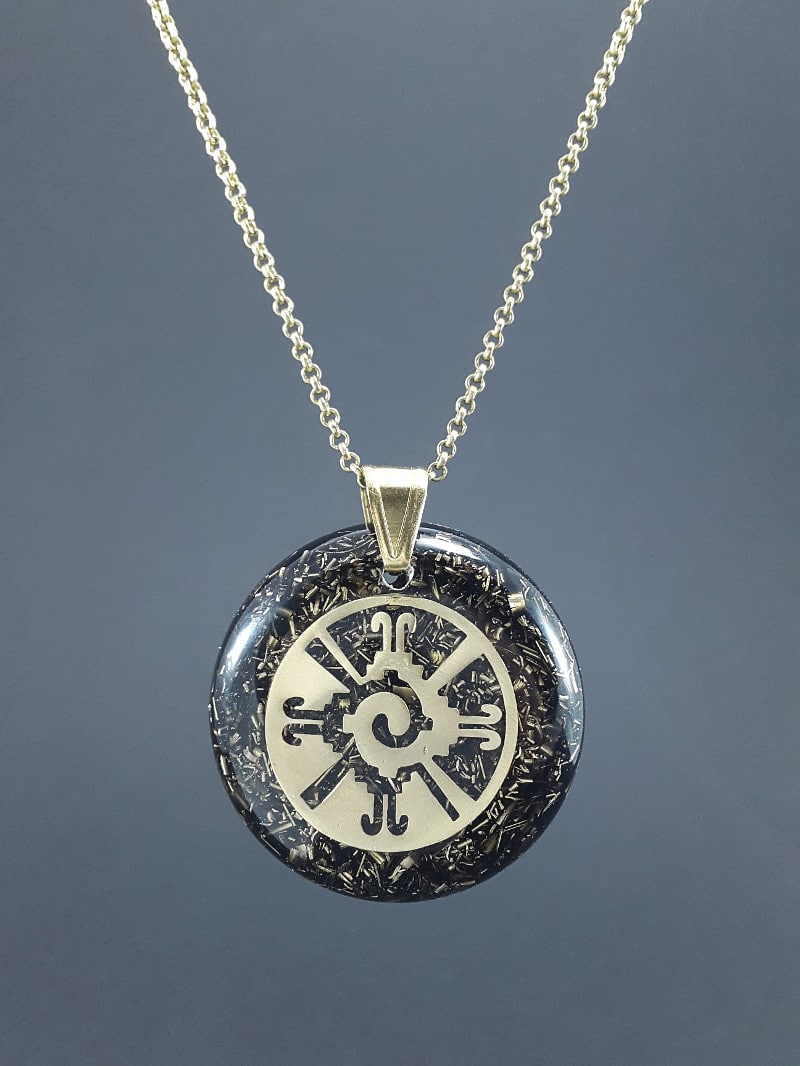The Mayans had the tradition of worshiping many gods, however one of the most important was hunab ku, whom he considered the greatest of all deities. We invite you to learn more about its history, origin and meaning through the following article.

hunab ku
Within Mayan mythology we can find many important deities that have had their weight throughout the history of this ethnic group, considered one of the most emblematic and popular of all time. Among the most renowned Mayan deities stands out Hunab Ku, whose name means "The Only God".
Hunab Ku could be described as a highly renowned Mayan deity within the Mayan culture, and although it is quite strange to think that the Mayans believed in only one god, everything seems to indicate that Hunab Ku had a special place in the Mayan culture. It would be worth asking: Did the Mayans have a belief in an omniscient creator god? We will talk about that and more in the next article.
Hunab Ku as the Mayan God
To understand a little about the history and importance of the god Hunab Ku, it is necessary to study more in depth about its origin. When we want to find an answer as to why we believe what we believe, we surely turn to the Bible. We should do the same with history.
That is why before making an assumption based on the name of this Mayan deity, we are going to briefly dwell on each of the available facts. In this way we will be able to understand more precisely the origin of the god Hunab Ku and why he is considered "The Main God" of the Mayan culture.
Before we begin we should think for a moment about the following questions: Where did Hunab Ku come from? Where is this name first mentioned? These and other questions will help us understand who the god Hunab Ku was and his influence within Mayan mythology.
It has been said throughout history that Hunab Ku was one of the native deities of the Mayan culture. Suppose we are correct. If so, the most logical thing would be to find some kind of evidence of that in their codices (hieroglyphic books). However, the reality is that there is no evidence of Hunab Ku anywhere, until the arrival of the Franciscan monks in Yucatan.
According to history, the Franciscan Order is considered one of the most powerful and influential orders on the European continent during the XNUMXth and XNUMXth centuries. In addition to this, they are recognized as the order that managed to send the largest number of missionaries to the New World from Spain.
Each one of these missionaries sent by the Franciscan Order had a main objective and that was to try to convert the natives to the current of Catholicism. The missions were sent from the Spanish Crown and played a fundamental role in the history of that time.
In the time of 1549 one of the first missionaries arrived. It was the future bishop of Yucatan, Diego de Landa Calderón. This character is widely known for being the creator of the "List of things in Yucatan". In this document some details about Mayan religion, life and language were outlined.
Years later, specifically in 1562, Diego de Landa himself proceeded to burn a large number of Mayan codices in order to eliminate paganism in the area. The truth is that Landa was able to burn many codices, however some managed to survive, as well as the Mayan-Spanish translations of Franciscan monks to bear witness to Mayan life and religion before the arrival of the European conquerors.
The point is that this is one of the Franciscan works where we can find the first reference to Hunab Ku. The Motul dictionary is a Mayan-Spanish dictionary dating from approximately the XNUMXth century. The dictionary corresponds to the authorship of the Franciscan friar Antonio de Ciudad Real, who is said to be the most talented Mayan linguist of the time.
It is believed that this Franciscan spent most of his life compiling this and other Mayan-Spanish linguistic works, and for this reason he is recognized as one of the most important and influential Mayan linguists in history.
The first mention of Hunab Ku says the following:
“Hunab Ku: the only living god and he was the mayor of the gods of Yucatan and he did not have a figure, because they said that he could not figure himself because he was incorporeal. This translates as: “the only living and true god, also the greatest of the gods of the people of Yucatan. He had no form because they said that he could not be represented because he was incorporeal”.
In other texts of the time mention is also made about Hunab Ku, especially in two similar dictionaries corresponding to the same period of time. In both texts this deity is defined as “Dios Único or Only God”.
- Hunab Ku: One God (San Francisco Dictionary, Mayan-Spanish)
- Hunab Ku: One God (Combined Solana/Motul II/SF Spanish-Maya)
The truth is that the first mention of Hunab Ku that appears in the Yucatecan Mayan language corresponds to the reference embodied in a dictionary authored by a foreigner, so it would be worth asking: Is it possible that this deity was a Franciscan invention?
Many affirm that it was an invention to introduce the Mayans to the idea of the one true God in their own language, however others assure that Hunab Ku is found in a pre-conquest source. If that were true, then it would be evidence that Hunab Ku was a deity before the arrival of the conquerors and therefore the Mayans had knowledge of monotheism.
Chilam Balam Book
According to what many historians have said, the Book of Chilam Balam is a purely indigenous work, that is to say that no figure linked to Catholic priests intervened in it. The truth is that the Libro de Chilam Balam de Chumayel is not a single work, but rather a series of nine famous books authored by Chilam Balam, which preserves a mixture of traditional Mayan knowledge and Spanish influences.
In fact, some parts of the book are written in the Mayan language of hieroglyphs, however in other parts we can see the Latin alphabet, which shows the union between both cultures, both the Mayan and the Spanish influences. All this gives us to understand that the book has its origins in the times before the arrival of the conquerors, while other parts of the book were written during the conquest of Yucatan.
Starting from that point, it does not seem that anyone can affirm that this book has not been touched by the Catholic current. Scholars generally agree that where Hunab Ku is mentioned within the Book of Chilam Balam, it is in a context where Hunab Ku appears as the Mayan name of the Christian god.
Among one of these scholars or scholars we can make special mention of William Hanks, who was an anthropological linguist. He this character is the author of the book "" Converting Words: Maya in the Age of the Cross ", where he points out the following about the god Hunab Ku:
“The missionaries were well aware that by using a preexisting Mayan term for 'god' (ku), they risked fostering syncretism and confusion between the Christian God and the diabolical idols they were seeking to extirpate. Thus, although both dictionaries cite the bare root ku for god, this root generally occurs with qualifiers intended for disambiguation.”
“The living God, the God of peace, the God who watches over individuals are all aspects of the specifically Christian concept. The use of Hunab Ku [one + suffix + god] for the uniqueness of God is linguistically transparent to the unity of the Father, the Son, and the Holy Spirit, and occurs widely in missionary writings."
After briefly analyzing each of these literary texts, we can understand more closely how this deity called Hunab Ku came to be. It could be said that it was a name widely used by Franciscan monks as a substitute title for the one God of Christianity.
Suppose then that Hunab Ku was a name that was simply used by Franciscan monks to refer to the unique God of Christianity, but why is there so much confusion for Christians about this deity? Surely we still have many things to discover, so let's continue delving into the origins and history of this deity.
Kidnaped
Until now there are no doubts about the importance that the name of Hunab Ku had in history, before and after the time of conquest. Although it is true that originally this deity was used for positive purposes, for example, teaching the Mayans about God, it is also true that this deity has been kidnapped many times by authors of the modern world.
The modern world took this deity's name out of its historical physical context and turned it into a term completely alienated from reality, taking it to the opposite side of what Hunab Ku was intended to be. These abductions take the idea behind this deity further and further from a conversion tool.
It could be said that the modern world has turned Hunab Ku into a kind of symbol for the new age community, even for followers of Mayanism. However, Christians need not be tormented by such an association, as once you investigate further, you discover that these claims have no basis in historical fact.
It is said that one of the first personalities to kidnap Hunab Ku was the famous Mexican-born philosopher named Domingo Martínez Paredez, who came to show this deity as evidence for Mayan Monotheism. He apparently connected Hunab Ku to symbolism within Freemasonry.
His theories can be seen in one of his books published in the 1964 decade, specifically in "Hunab Ku: Synthesis of Mayan philosophical thought." Other men dared to go further to hijack Hunab Ku's idea based on Paredez's work.
One of these men was José Argüelles (1939-2011). He is recognized for being the American founder of the New Age movement, but perhaps he is best known for his intervention in the apocalyptic phenomenon of 2012. According to this phenomenon, it was believed that a cataclysmic event would end the world on December 21. December 2012.
Arguelles was also in charge of popularizing some symbols related to Hunab Ku, especially one that he published in his book "The Mayan Factor" in the 1987 decade. Surely when you try to search for information on the internet about Hunab Ku, many symbols will appear, but it is important remember that there is actually no historical or hieroglyphic symbol for this deity at all.
Suppose a Hunab Ku symbol was created after the arrival of the Franciscan monks. If so, the truth is that there is no evidence to prove this event. It seems he had originally suggested that Hunab Ku was represented by the symbols of a square within a circle or a circle within a square; this was never proven when he comes under scrutiny.
Arguelles transformed Paredez's idea of a symbol and turned it into something that has become highly recognizable in today's media world. As told by this author, he first observed this symbol on a rug in Mexico, but not as it is shown in his book. The symbol reflected in his book is Argüelles' adaptation to make the symbol resemble something more similar to a Yin-Yang or a Milky Way, typical of other New Age beliefs.
Many images of the first forms of the symbol modified by Argüelles have come to light. Some of these images were found in a XNUMXth century Aztec Codex called the Codex Magliabechiano. Within the Codex are illustrations of cloaks used in Aztec religious rituals.
Each of these layers has a different color and name, this means that it was not a unique design but rather diverse. Surely you are wondering why an Aztec cape was connected to a symbol invented for a Mayan deity that did not even exist until the arrival of the Franciscan monks? There is no understanding.
There is no basis for a possible relationship or link between Hunab Ku and other symbols based on New Age beliefs. So, if there is no link between Hunab Ku and New Age beliefs, is this evidence for Monotheism in the Maya? Unfortunately not; that idea cannot be supported by the historical context.
History teaches us that the Mayans did not worship or worship a single deity, on the contrary, they had many gods whom they served, however they maintained traces of truth within their own pantheon. When we refer to a remnant of truth, we refer to the knowledge of God from the Tower of Babel.
The knowledge of the true God spread throughout the world as did the knowledge of Satan's lies. That is why, wherever he looks, he will find remnants and distortions of biblical ideas. Even among the pagan deities of the Mayan pantheon, there is a semblance of a creator god and a creation account, which we will briefly discuss in the next point.
Legend
The Mayan culture has its own legend about the creation of the world. The story talks about a character called Itzamná, Itzamnaah or “God D”, although they seem like three different names, the truth is that they refer to the same deity. This god, in the company of his wife, called Ix Chel, were responsible for the creation of what scholars call the Classic Era.
The Mayans worshiped the god Itzamná for a long time. In fact, within this culture it was believed that this deity had brought order to the world and ruled over other deities. This would be the deity that was later synchronized with Hunab Ku in the Franciscan attempt to facilitate the conversion of the natives to Catholicism.
However, the Mayans did not only worship the god Itzamná. In fact, before they worshiped that deity, they worshiped other creator gods who ruled over the previous worlds. Not only do the Mayans have creator gods, but they also have an ancient account of creation.
The so-called Maya Creation Account can be found in the Popol Vuh book. The name of this book has been translated as "Book of the people"; “Community Book”, and even the “You Paper”. It includes a collection of historical mythical narratives, including the creation story, as well as a mention of the Great Flood of Noah's day.
It is worth mentioning that this type of document, such as the Popol Vuh, was in great danger during the Spanish conquest stage, since many tried to burn it and erase the evidence of its existence, however it was able to survive and become one of the most important Mayan texts in history.
It is said that more than two hundred years passed after the arrival of the Spanish conquerors when a Dominican friar named Francisco Ximenex became aware of the existence of a sacred book that the Mayans had kept secret for a long time. This friar proceeded to transcribe his own copy, and his eighteenth-century copy is the only one that has survived to this day.
“These, then, are the first words, the first speech. There is not yet a person, an animal, a bird, a fish, a crab, a tree, a rock, a hollow, a canyon, a meadow, or a forest. Only heaven exists. the face of the earth has not yet appeared.
Only the expanse of the sea lies, together with the womb of all the sky. Nothing is gathered yet. Everything is at rest. Nothing shakes. Everything is languid, at rest in the sky. There is nothing standing yet, only the expanse of water, only the calm sea lies alone.
There is still nothing that can exist. Everything is placid and quiet in the dark, at night.” (Popol Vuh, p. 67-69) The previous section of the Popol Vuh creation account echoes what we find in Scripture: “In the beginning God created the heavens and the earth. The earth was without form and empty, and darkness was on the face of the abyss. And the Spirit of God moved over the face of the waters.”
What have we learned so far about Hunab Ku? First of all, we explain the meaning of its name. Now we know what "The Only God" means. We also analyze each of the historical events that prove that this deity did not really correspond to the native Mayans.
It was actually a name invented by the Franciscan monks of the time to help the Mayans understand the concept of God. Some time later, Hunab Ku was kidnapped by new age authors who made him look like something he was not, trying to distort his true meaning.
It is true that Hunab Ku cannot be used as proof that the ancient Maya were monotheists, but we can still find traces of truth in their mythologies when we look at books like the Popol Vuh. These testify to the reliability of biblical accounts like the Tower of Babel and remind us that Satan can never create, he can only distort what God has made.
all about symbol
Hunab Ku began to appear after the arrival of the Spanish conquerors, in fact, before the conquest in the sixteenth century, it could be said that there is no mention of this deity. Of all the thousands of existing sources, such as stelae, ceramics, murals and books that speak of Mayan history, none of them mention Hunab Ku.
There is enough evidence that makes us think that the Maya unquestionably believed in a polytheistic universe, that is, they did not worship a single god but believed in many deities at the same time. Within the Mayan culture there was no conception of a single God and that is more than notorious.
For this reason, it is easy to conclude that the origin of this particular Mayan deity was the result of colonial literature, written mainly by Franciscan monks after the Spanish conquest, and which sought to convert the Mayan people to Christianity. This is how the history of what we know today as Hunab Ku arose.
Hunab Ku and Christian missionaries
It is no secret to anyone that Hunab Ku, as a deity, has its origin in the scriptures of the Christian missions. According to what many modern Mayan historians and researchers have said, the figure of Hunab Ku did not exist, at least as a Mayan deity, during pre-Hispanic times.
This means that it was after the arrival of the Spanish conquerors that Hunab Ku began to be seen as a Mayan deity, even after that time of conquest when the concept was added to the Mayan pantheon. Scholars have found significant parallels between the Christian concept of unity, as manifested in the unity of the Trinity, and the unity associated with the Hunab Ku.
Hunab Ku and academic criticism
According to many anthropological connoisseurs, the figure of Hunab Ku basically corresponds to an invention created by the missionaries sent by the Franciscan Order. According to the opinion of these anthropologists, it is practically incomprehensible that Hunab Ku comes from the original pantheon of the Mayan gods.
To clarify this, scholars have drawn parallels between Christian missionary conceptions of the Trinity and the Hunab Ku-linked unity. According to these scholars, the purpose of the type of unit given to Hunab Ku is to make it look similar to the Christian God and thus bring the Mayans closer to the monotheistic religion, which was basically the intention of the missionaries in the post-war era. -Spanish.
Hunab Ku New Age revival
Different personalities related to the New Age world were responsible in one way or another to revive and popularize the concept of Hunab Ku in the XNUMXth century. Many renowned authors brought the concept back to life, among them we can highlight Domingo Martínez Paredez, who interpreted the Mayan monotheistic deity by associating it with the symbol of a square within a circle.
Paredez also drew parallels between this interpretation and the Freemason universe concept being made by a Great Architect. This was an attempt to associate esoteric elements with the notion of a monotheistic Mayan god. Paredez wrote about his ideas in a later book and they were later expanded by José Argüelles.
Hunab Ku symbolism
As we have been mentioning throughout this article, the figure of Hunab Ku did not appear in the ancient Mayan cities and it is for this reason that it is impossible to find any symbol related to this particular deity among the early Mayans, however others Currents like the New Age did create their own symbols.
Many of the New Age authors in the XNUMXth century proclaimed the association of different symbols with the Hunab Ku. One of them was Paredez, who popularized a theory indicating that this deity was represented by a square within a circle, or a circle within a square.
Time later the appreciation of another New Age author came to light. It was about Arguelles, who for several years focused on expanding the ideas proposed by Paredez. He came to the conclusion that it was not actually a square, but rather a rectangular design that the Mesoamericans used to refer to the supreme deity.
Arguelle further transformed the symbol to appear to include the yin and yang motif, and a circular design representing the galaxy. This particular design was used by most of the Aztecs in their ritual cloaks and has been found in a XNUMXth century codex related to the Aztecs.
Hunab Ku and cosmology
Most of the authors of the so-called New Age have paid special attention to the cosmic significance of the Mayan god known as Hunab Ku. Logically, this meaning is combined with the insistence that Hunab Ku is an ancient god, while no such evidence exists in the Maya sources.
Beyond that, New Age authors continue to believe that this deity, Hunab Ku, was the god in charge of originally creating the Universe. They also assure that this god lived in the center of the Milky Way. Likewise, it has been said that, since the Mayans were great, astronomers observed the stars and placed Hunab Ku in the center of the universe.
It is worth mentioning that Hunab Ku, according to the beliefs of many cultures and currents, was considered to be the center of the entire galaxy. Likewise, for the Mayan culture, this deity was the heart and mind of the Creator. There and through the sun, they directed their gaze as they studied the stars.
The Mayans had many popular beliefs around this deity, for example, they believed that their hearts and minds are at the center of the universe and to be able to communicate with the god Hunab Ku was only possible through the sun. Considered the center of the galaxy and, in turn, the heart and mind of the creator, creator of the world and of man, it is said that Hunab Ku built the world three times.
The first time it was inhabited by Genii. On the second occasion the world was inhabited by the dzolob, a dark and sinister race. In the last attempt made by Hunab Ku, the world was inhabited by the Mayans. In addition, the Mayans maintained the belief that the center of the galaxy, that is, Hunab Ku, every 5.125 years, a "synchronizing ray" arises, which precisely synchronizes the sun and all the planets, with a powerful emanation of energy.
Hunab Ku and Cosmic Consciousness
It is no secret to anyone that the authors of the New Age have assured for years that the deity known as Hunab Ku is located in the center of the Milky Way. Now, behind that statement, there is also a spiritual purpose. In fact, New Age authors give a symbolic spiritual meaning to this location of the god Hunab Ku.
According to their beliefs, it is said that the god Hunab Ku was responsible for creating the universe. Tradition confirms that this deity formed the universe from a rotating disk and it is he who continues to give birth to new galaxies and astral bodies. Likewise, Hunab Ku is believed to be the creator of all consciousness in the universe.
Summary of Hunab Ku
So far we have had the opportunity to learn a lot about the god Hunab Ku. In the first place, it is important to point out that we are facing one of the deities, if not the most controversial deity within the Mayan culture. According to most historians, it is believed that this god was originally an invention of Christian missionaries, after the Spanish conquest of the Mayan regions.
What was the purpose of the Christian missionaries in inventing a deity like Hunab Ku? According to history, the central objective of the missionaries was to create a deity, whose name means "the only God" in Mayan. With this invention, the missionaries intended to bring the Mayans closer to the religion of Christianity and convert them towards that religious current.
This version becomes even more valuable when ancient historical documents of the Mayan culture are analyzed, in which the figure of Hunab Ku is not recorded anywhere. This means that in the ancient Mayan cities this deity did not exist, but rather it was an invention that came in times of the Spanish conquest.
Modern interest in Hunab Ku has been sparked after so-called New Agers began attributing new symbols and meanings to Hunab Ku during the XNUMXth century.
Meaning in tattoos
Mayan symbols have become one of the main motifs embodied in tattoos. If you are one of those people who is thinking about the idea of tattooing a symbol of the Mayan culture, let me tell you that there are many ideas related to the god Hunab Ku. We invite you to continue reading to discover the origin and meaning of this particular symbol.
Hunab Ku is believed to be an ancient Mayan symbol that is a central feature in their sacred wheels of time or calendar systems. There are also theories that the symbol may belong to the ancient Aztecs. The symbol is a vital cornerstone in understanding the cycles of life (and also the central feature in understanding the Mayan myths).
The Hunab Ku symbol translates to mean: “A giver of movement and measure” or “The only source of energy”: With this kind of powerful concentration of energy, Hunab Ku is also a symbolic representation of god; the only god, or the highest god among the Maya (although this observation has not been proven).
Now, what does the Hunab Ku tattoo mean? The truth that is can have several meanings, but some of them are:
- The movement of life energy
- The cycle of life on a grander scale
- The order and balance of the cosmos
- The divine force or infinite power available in all life.
If we analyze this symbol in detail, we can notice several things, especially that it represents the ancient principle of balance in all things. It is even reminiscent of the classic yin yang symbol found in Asian symbology. You can see a balance in terms of light and dark factors. It carries deep symbolism of finding a balance.
Balance in popularity as:
- own shadow and own light
- Happy and sad
- Mother and father
- Night and day
- Right and left
- Sun and moon
According to Mayan scholar José Argüelles, the Hunab Ku is the beginning of life beyond the cosmos. Argüelles expresses the following on this topic:
“It can be described as possessing a simultaneous spin and counter-spin motion that radiates outward from a central point of indescribable energy that pulsates at a specific speed. That pulse is the principle of life and the imminent omnipresent consciousness in all phenomena.”
Some Featured Images
The impact that Hunab Ku has had on the civilizations of many cultures, not only in Mayan mythology, is no secret to anyone. We could say that it is one of the most representative figures, so much so that this deity, as a popular symbol, is widely used in any type of product. We can see the representation of her from tattoo designs, to wallets or purses, even glasses.
Below we show you some of the most outstanding images where the Hunab Ku symbol appears:
You might also be interested in the following articles:

